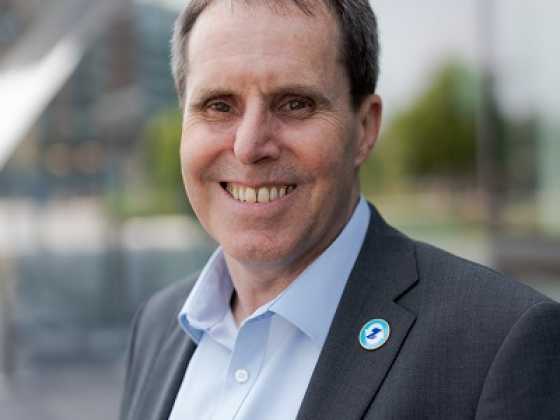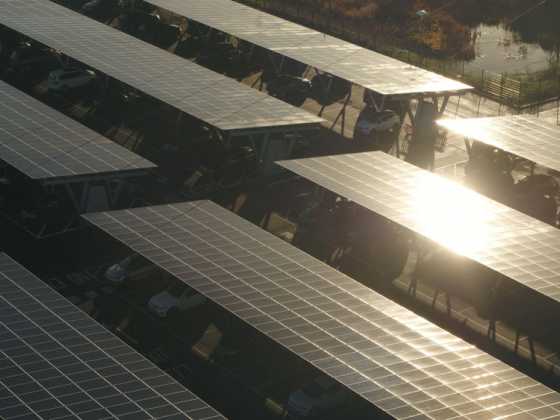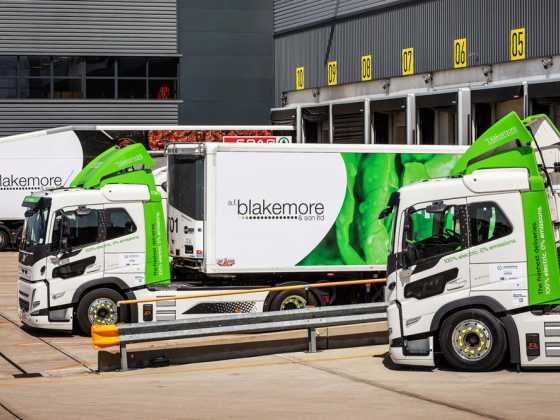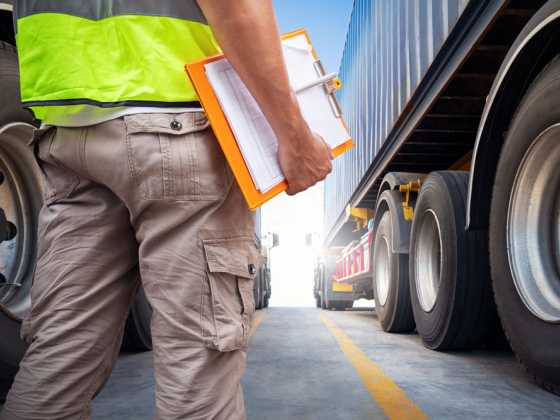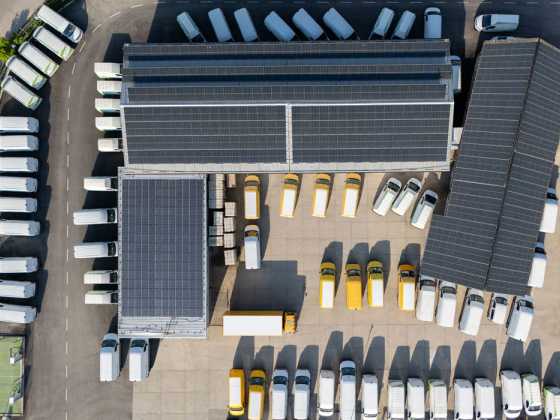EV Rally 2023: Unpicking the data

The UK’s most talked about EV event of the year – the EV Rally: Capital City Challenge – took to UK and Irish roads in July to demonstrate EV innovation and capability, public charging infrastructure and clean energy projects. We unpick the data behind the Challenge that can help you get your fleet to net zero.
At a ‘meeting of minds’, the great and good behind the GREENFLEET EV Rally (EVR) gathered at Bridgestone’s HQ in September following this year’s hugely successful event, that took place 03 - 07 July. The meeting, hosted by EVR Event Partners Bridgestone and Webfleet, was an opportunity to share the data collected, including ‘driver style’, from the vehicles that participated, revealing the impressive capability of electric transport.
Now in its third year, the EV Rally was a ‘demonstration’ of UK and Irish EV charging infrastructure, combined with clean and innovative vehicle technology. Sponsored by the UK’s leading leasing specialists, Lex Autolease, the idea was to demonstrate the roles that EVs can play in UK and Irish fleets; that no matter what the job, there is likely an EV available that can perform the task, improve efficiency, save money and, overall, help businesses reach net zero.
How did it work?
We put 50 EVs on the road and set them off from Cardiff to embark on a five-day, 1,200+ mile ‘e-Rally’ taking in the other four capital cities along the way – London, Edinburgh, Belfast and Dublin. Teams were asked to stop at designated, official Checkpoints (CPs), where they ‘Checked In’ using the bespoke EVR app, developed by Charge Card Partners, Paua. Drivers were encouraged to plan their routes and their charging stops each day, and take to social media each time they stopped.
In total, 20 teams drove more than 27,000 miles in five days and as well as taking in many of the beautiful landmarks on-route, the Challenge showcased the charging infrastructure across the UK and Ireland.
Social media
In the approach to July, there was a huge buzz on social media platforms from all participants of the Rally. This reflected the engagement that the Rally has captured since inception in 2021 when the event was staged in Scotland (EVROS), during COP 26. Back then, EVR had no LinkedIn (LI) connections or ‘X’ (Twitter) followers when the promotional campaign began in August. By November the event had 487 connections. Following Rally week, LinkedIn recorded a total reach (including the participating Teams, comprising 23 vehicles) of 156,241, while ‘X’ reached 222,410.
Following its success, 2022 saw EVROS rebrand as the Great British EV Rally (GBEVR) and the route was chosen – the iconic John O’Groats to Land’s End. Once again staged over 5 days, the participating Teams switched from vehicle manufacturers to UK business, with the likes of OVO Energy, DPD UK, Mitie and National Grid taking part. The Rally had ‘doubled in size’, with 46 vehicles taking on the epic 1,200 mile journey and the event once again dominated the social media feeds, with GBEVR LinkedIn posts achieving more than 103k impressions, and ‘X’ engagements increasing by more than 4000%! The success of the event was then reflected in it achieving ‘Event of the Year’ at the media industry’s PPA Awards, that autumn.
Fast forward to 2023, and 1,229,785 LinkedIn connections witnessed the Capital City Challenge, a feat never done before – 50 EVs taking in 5 x countries, in 5 days! ‘X’ totaled 480,180 and for the first time, Instagram - used by EVR media crews - recorded more than 40k impressions, and on top of BBC Radio interviews with some of the key drivers, the event was featured on BBC TV News for the second year.
Number crunch
EVR Event Partners Bridgestone and Webfleet – Official Tyre and Technology Partners, respectively – compiled data from one vehicle from each participating Team that took part. Taking in a mix of motorways and rural roads, they measured ‘energy’ and ‘driver style’, taking into account ‘safety’ as well, using the latest telematics on the market.
With 22 of the EVR vehicles fitted with Webfleet technology (just under half of those that took part), the data makes for some insightful reading. Richard Parker, Corporate Sales Manager, Webfleet said: “Because we tracked 22 vehicles, you can pretty much double these stats. We drove 27,500 miles that week… the equivalent to driving once around the world”. And on carbon saved, in comparison to doing the Rally route in ICE vehicles, he continues: “We avoided 4.87 tonnes of carbon being used, thanks to us using 6,797 kWh of energy in the EVs”.
This year was not just about sustainable driving, but safety as well. Richard commented: “On our driver behaviour scores, we consider 8 and above to be good driving and there isn’t a single driver, of those we tracked and monitored, that fell below that benchmark. The average, across them all, is 9.06, which is really good driving”.
One of the aspects of the Rally that is taken into account is the carbon generated, as there is inevitably some produced across the five days. Webfleet have partnered with Justdiggit, who are different to your average tree-planting offset scheme. Richard Parker explained: “We focus on an area of Tanzania that is 47 times the size of London and what we are doing is re-greening the areas that have turned to desert and re-greening them. They capture rainfall in wells, replant indigenous trees and plants and the ‘human’ side to all of this is that they bring back the farmers that used to work the land and teach them to farm the land sustainably.”
The impact of the Rally
So, what did the Rally do, in terms of offsetting? 690 trees were restored to the land, 670,000 litres of water has now been saved and 134 tonnes of less carbon as a result 190,00 sqm of dry land will now be re-greened. And the human element to what the Rally has done now means that 65 people will now have a more positive life to lead, as a result of the Rally.
Go, go, go Paua Rangers
Charge Card Partner, Paua – suppliers of the UK’s number one Electric Vehicle Fuel Card – also used enhanced digital technology to demonstrate the capability, and moreover, the reliability of just a few of the thousands of charge points now available across the UK, Scotland and Ireland.
Paua (or the Paua Rangers as they became known) charged two thirds of the 50 Rally vehicles. Each Team, using the EVR app, had access to a route map showing stops they could make to ‘Paua-up’ their vehicles, at any number of charge points and hubs that are part of the Paua network.
Each of the 50 vehicles drove upwards of 250 miles per day with day two recording the most amount of charge used due to a stop at a Washington CP, featuring FastNed charging. Average DC charge recorded by Paua in Rally week was 28.6 kWh and although this is relatively low, as Paua CEO Niall Riddell points out, this figure is higher than the fleets that Paua currently operate with.
The EVR app showed participants the most used CPs and they were able to gauge where on the route the other Teams were. The feature most used was the ‘Check-In’ functionality, and drivers also used the app’s route navigation to help get to charge points, bespoke route tracking and perform their CP social media posts, with @handles and #hashtags pre-populated for ease.
Commercial vehicles were the talk of the Rally
It wasn’t just electric cars driving the Rally. A wide range of Maxus vans took part, including the eDELIVER 9, T90EV pick-up and the Mifa 9 EV, while Mercedes-Benz Trucks also demonstrated the eActros and Team DAF-Cenex entered a 19-tonne e-truck of their own.
The highlight of day one was that every vehicle apart from the MB truck charged at least once, over the 316 miles. The eActros actually exceeded the official mileage by 10 additional miles and didn’t stop once to charge! The balance came on day two, when they did take much longer to charge than any other vehicle, which is somewhat obvious, but as Paul Kirby, EV Essentials and driver for Team Maxus explains, “Having these two electric trucks involved was insightful and it enables us to learn and get the message out there that all vehicles of all sizes can be net zero”.
Electric vans driven in the Challenge showed that they were more than capable to take on the task too – busting the myth that they will fail businesses integrating them into established service fleets. As the figures show, cars recorded better range but vans more than proved themselves with the right driver behind the wheel.
These figures are significant. Stigma remains among van fleet drivers that battery range, capability and inclusion of vans in service fleets could be a detriment to SMEs in particular. In a Webfleet van driver survey, the telematics experts asked, ‘What’s most important to you?’. Fifty-one per cent said “doing my work well”, 44 per cent cited “Having a good relationship with customers”, 39 per cent said “getting home safe” and just 16 per cent cited “impact on the environment” as important to them. This shows that van drivers are a difficult cohort to persuade to switch to EVs. And this is where the Rally can play a significant role in developing the electric commercial vehicle market – education!
What did become evident is that the public charging infrastructure is currently unviable for drivers of trucks and vans to use.
“Public charging is too expensive in the real world”, Kirby explains. “It won’t work for trucks or vans. In some cases, drivers do not just pay to use the charge point but also to park in the charge point space. We need to get the message out to fleet drivers of CVs that charging should and can be done in a different way.”
During the Rally, Maxus vans utilised charge points and technology on offer from dealers. It is this concept of ‘behind the wire’ charging that Kirby sees as necessary in order to get van fleet drivers to accept the switch to net zero.
“What the Rally teaches us is that infrastructure is not necessarily as good as it can be; energy is not always in the right places and for this reason innovation is important. Solar power combined with that of battery shows promise and this is currently being tested for charge point deployment.”
EV Rally 2024
Much of next year’s Rally remains under wraps and as we look ahead to 2024 it is important to reflect on lessons learned so far.
“Today was a gathering of GREENFLEET EV Rally sponsors and key participants,” explains Chris Chandler, Principal Consultant at Lex Autolease, headline sponsor of this year’s EV Rally. “We’re using it as an opportunity to look back and reflect on the huge success of this year’s event, but more excitingly, start the planning for the EV Rally 2024. There are sure to be some great innovations and challenges given the enthusiasm and expertise around the table.”
So, what do we know? There will be a new and even more challenging route. Webfleet will introduce enriched data tracking to enhance the experience for drivers and result in better engagement throughout the journey. Data will also detail how commercial vehicles are affected by battery use when carrying loads, such as site equipment.
Communications will get a boost too thanks to the introduction of dedicated Instagram and Facebook pages. GREENFLEET Events Manager Colin Boyton explains. “As a fleet B2B event, our primary channels have always been LinkedIn and ‘X’ (Twitter). However, making use of Facebook and Instagram ensures that the messages reach a consumer audience too, so we truly are crossing the B2B/B2C divide.”
What 2023’s EVR proved above all else is the reliability of EVs today, their capability and the reassuring proof that battery range is no longer an obstacle to transitioning your fleet to net zero.
“This year’s EVR has proved to be a successful event”, explains Colin. “Firstly, it proves that ‘range anxiety is no longer a thing’… It’s now ‘change anxiety’. People and businesses are anxious about change. It shows that we have something here that is different. We prove that EVs work, the charging infrastructure is good and will only get better. #collaboration is at the heart of what we do and how we communicate it and once again, we all worked together for the greater good. Of course we can improve and this is exactly what we plan to do, as we plan for next year. 2024 will push boundaries and take the EV Rally to the next level.’
For background on this year’s EV Rally visit EV Rally 2023 (ev-rally.co.uk) and be on the watch for what to expect in 2024.


